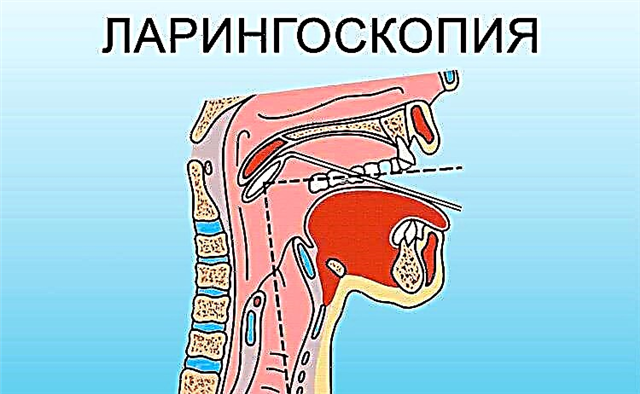Bleeding (hemorrhage) is considered the most serious condition in medical practice. One of the most common and relatively safe options for pathology is nasal (epistaxis) - a nonspecific sign of various diseases. The appearance of blood from the nose is most often recorded after injuries or during a hypertensive crisis (a sudden increase in blood pressure). The development mechanism is associated with damage to the integrity or the release of elements through the impaired permeability of the vascular wall. However, sometimes this phenomenon occurs against the background of low values of the tonometer and also requires medical attention.
What happens to the vessels of the nasal mucosa at low pressure?
 A drop in blood pressure indicators is accompanied by a decrease in vascular tone, an expansion of the lumen, a thinning of the wall and a violation of blood supply in all parts of the body. The nasal mucosa has very good vascularization for:
A drop in blood pressure indicators is accompanied by a decrease in vascular tone, an expansion of the lumen, a thinning of the wall and a violation of blood supply in all parts of the body. The nasal mucosa has very good vascularization for:
- cleansing (trophism of mucosal cells due to the delivery of nutrients to the ciliated epithelium);
- warming (the circulation of a warm liquid through the vessels located superficially ensures an increase in the temperature of the air that comes from outside);
- regulation of the lumen: expansion in summer and narrowing in winter. An increase in vascular permeability causes swelling of the mucous membrane to reduce the flow of cold air.
Vessels of the nasal mucosa are located superficially and are susceptible to environmental factors. Decreased wall tone, dilatation (expansion of the lumen), slowing down of blood flow is accompanied by characteristic symptoms of dryness and discomfort. In addition, some people have nosebleeds with low blood pressure.
Causes of bleeding with hypotension
Hypotension is a pathological decrease in blood pressure below 110/70 mm Hg. The onset of this condition may be associated with a pathology of the nervous, endocrine or cardiovascular system. The development of nosebleeds against a background of low blood pressure occurs at times less often than with hypertension.
The main causes of the onset of pathology and the mechanism of development are presented in the table.
| Bleeding risk factor | Development mechanism |
|---|---|
| Injury | Mechanical damage to the integrity of the vascular wall causes the appearance of blood from the nostrils. With hypotension, compensatory reactions of smooth muscle spasm do not develop, and hemorrhage lasts longer than against the background of normal pressure |
| Vegeto-vascular dystonia | Violation of the innervation of the arterial or venous wall is accompanied by a pathological decrease in tone and increased vascular permeability. With a strong emotional impact, overheating - blood appears |
| Thrombocytopenia (low platelet count, less than 150 * 109 / L) | The platelets are responsible for the coagulation function and trophism (nutrition) of the vascular wall. With an insufficient number of cells, the latter's permeability for erythrocytes increases. The resulting bleeding is characterized by duration and slow coagulation. |
| Liver disease | Violation of the synthesis of blood coagulation proteins by hepatocytes contributes to the occurrence of epistaxis |
| Malignant neoplasms | Oncological pathologies are accompanied by suppression of the functions of the liver (protein synthesizing), bone marrow (hematopoietic) and endothelium of the vascular wall |
The appearance of nosebleeds in hypotensive patients is a frequent symptom of prior loss of consciousness, therefore medical attention is required.
How to deal with the problem?
Slow blood clotting and the absence of rapid self-destruction are a feature of nasal hemorrhages in hypotensive patients.
The algorithm for stopping bleeding implies:
 to put the patient. The lying position promotes the flow of blood into the pharynx and stomach, and completely vertical (standing) - a rapid drop in total pressure.
to put the patient. The lying position promotes the flow of blood into the pharynx and stomach, and completely vertical (standing) - a rapid drop in total pressure.- reassure the patient - strong excitement worsens the condition;
- tilt your head down. Medical professionals do not recommend throwing it back, since it is impossible to assess the severity of bleeding due to liquid entering the pharynx and stomach;
- use a tight tamponade. A gauze napkin or cotton wool is folded into a dense turunda, which is moistened in a 3% hydrogen peroxide solution and inserted into the bleeding nostril. Mechanical compression of blood vessels (with hypotension there is no tendency to autonomic spasm) and chemical reactions with peroxide contribute to a rapid stop of epistaxis;
- after stopping an acute condition, decongestants are often used - vasoconstrictor drugs (for example, Oxymetazoline). Means are contraindicated in patients with hypertension.
Throwing the head back with massive loss of blood is accompanied by the risk of choking with fluid.
If these methods are ineffective, it is recommended to call an ambulance team, since in the presence of serious blood pathology, specific drug therapy is required.
Is it possible to prevent such a condition and how to do it?
The occurrence of bleeding against a background of low blood pressure is most often a sign of concomitant pathology. You can prevent the development of epistaxis:
 treatment of the underlying disease (depending on the pathology - hormonal therapy, blood products, cytostatics and other drugs as prescribed by the doctor);
treatment of the underlying disease (depending on the pathology - hormonal therapy, blood products, cytostatics and other drugs as prescribed by the doctor);- strengthening the vascular wall with vitamin preparations (for example, Ascorutin - a complex of vitamin C and P);
- rational nutrition with a sufficient content of trace elements and vitamins;
- regular physical activity, which increases the tone of the smooth muscle cells of the vascular wall;
- use humidifiers, since overdrying of the mucous membrane contributes to the development of bleeding.
Often, nasal hemorrhages occur in patients who take blood thinners (Aspirin, Clopidogrel, Warfarin, and others). To prevent the development of pathology, the use of funds should be carried out only according to indications with the permission of a doctor.
Conclusions
The development of nosebleeds against a background of low pressure is a sign of incompetence in the cellular composition of the blood, the coagulation system or pathology of the vascular wall. A distinctive feature of hypertensive epistaxis is the absence of a tendency to self-destruction due to a decreased vascular tone. Timely assistance prevents the development of massive blood loss, however, frequent episodes of hemorrhages require consultation and a thorough examination by a doctor.

 to put the patient. The lying position promotes the flow of blood into the pharynx and stomach, and completely vertical (standing) - a rapid drop in total pressure.
to put the patient. The lying position promotes the flow of blood into the pharynx and stomach, and completely vertical (standing) - a rapid drop in total pressure. treatment of the underlying disease (depending on the pathology - hormonal therapy, blood products, cytostatics and other drugs as prescribed by the doctor);
treatment of the underlying disease (depending on the pathology - hormonal therapy, blood products, cytostatics and other drugs as prescribed by the doctor);

